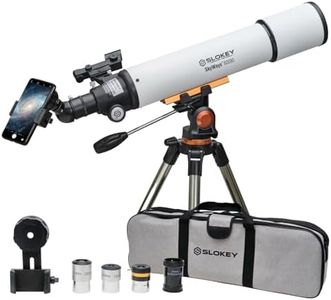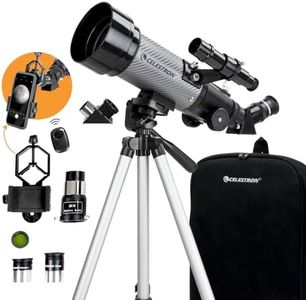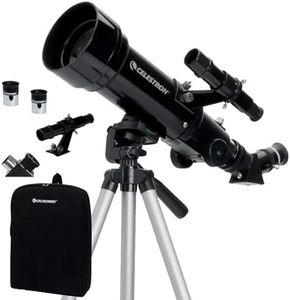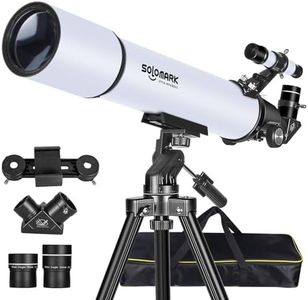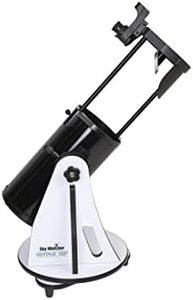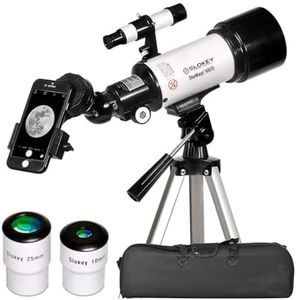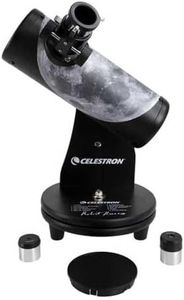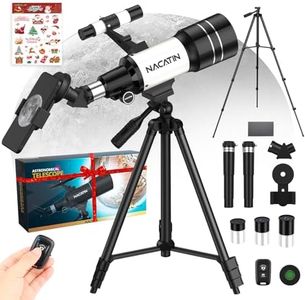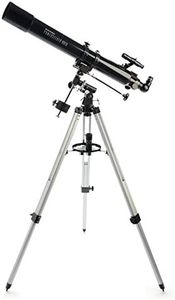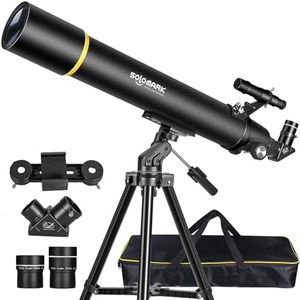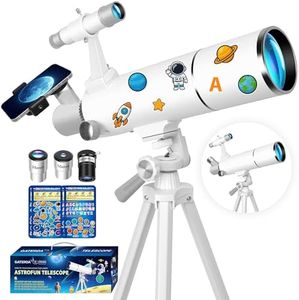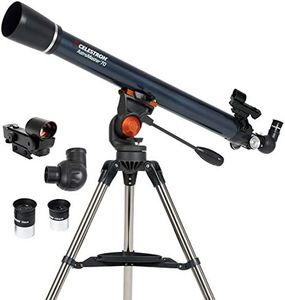We Use CookiesWe use cookies to enhance the security, performance,
functionality and for analytical and promotional activities. By continuing to browse this site you
are agreeing to our privacy policy
10 Best Kids Telescopes
From leading brands and best sellers available on the web.Buying Guide for the Best Kids Telescopes
Choosing a telescope for kids can be a fun and educational experience. The right telescope can spark a child's interest in astronomy and science, providing them with a tool to explore the night sky. When selecting a telescope for a child, it's important to consider factors such as ease of use, durability, and the level of interest the child has in astronomy. A telescope that is too complex or fragile may discourage a young astronomer, while one that is too simple may not provide enough of a challenge or learning opportunity. Understanding the key specifications of telescopes can help you make an informed decision that aligns with the child's needs and interests.ApertureAperture refers to the diameter of the telescope's main lens or mirror, and it is crucial because it determines how much light the telescope can gather. The more light a telescope can collect, the better it can show faint objects in the sky. For kids, a smaller aperture (around 60mm to 80mm) is often sufficient for viewing the moon and planets. If the child is more interested in deep-sky objects like galaxies and nebulae, a larger aperture (100mm or more) might be more appropriate. Consider the child's level of interest and the types of celestial objects they are most excited to observe when choosing the aperture size.
Focal LengthThe focal length of a telescope is the distance from the lens or mirror to the point where the telescope forms an image. It affects the magnification and field of view. A longer focal length provides higher magnification, which is great for viewing planets and the moon in detail. However, it also means a narrower field of view, which can make it harder to locate objects. For kids, a moderate focal length (around 400mm to 700mm) offers a good balance, allowing them to see a variety of objects without too much difficulty in finding them.
Mount TypeThe mount is what holds the telescope and allows it to move. There are two main types: altazimuth and equatorial. Altazimuth mounts move up and down and side to side, making them intuitive and easy for kids to use. Equatorial mounts are more complex and are designed to follow the rotation of the Earth, which can be useful for tracking objects but may be challenging for beginners. For most kids, an altazimuth mount is a better choice due to its simplicity and ease of use.
PortabilityPortability refers to how easy it is to move and set up the telescope. A portable telescope is lightweight and compact, making it easy for kids to carry and set up on their own. This is important if the child will be using the telescope in different locations or if storage space is limited. Look for telescopes that are designed to be easily assembled and disassembled, and consider the child's ability to handle the telescope independently.
DurabilityDurability is important when choosing a telescope for kids, as it needs to withstand the occasional bump or drop. Telescopes made from sturdy materials and with solid construction are less likely to be damaged during use. Consider the age and responsibility level of the child when assessing durability. A more durable telescope can provide peace of mind and ensure that the telescope remains functional for a longer period.
